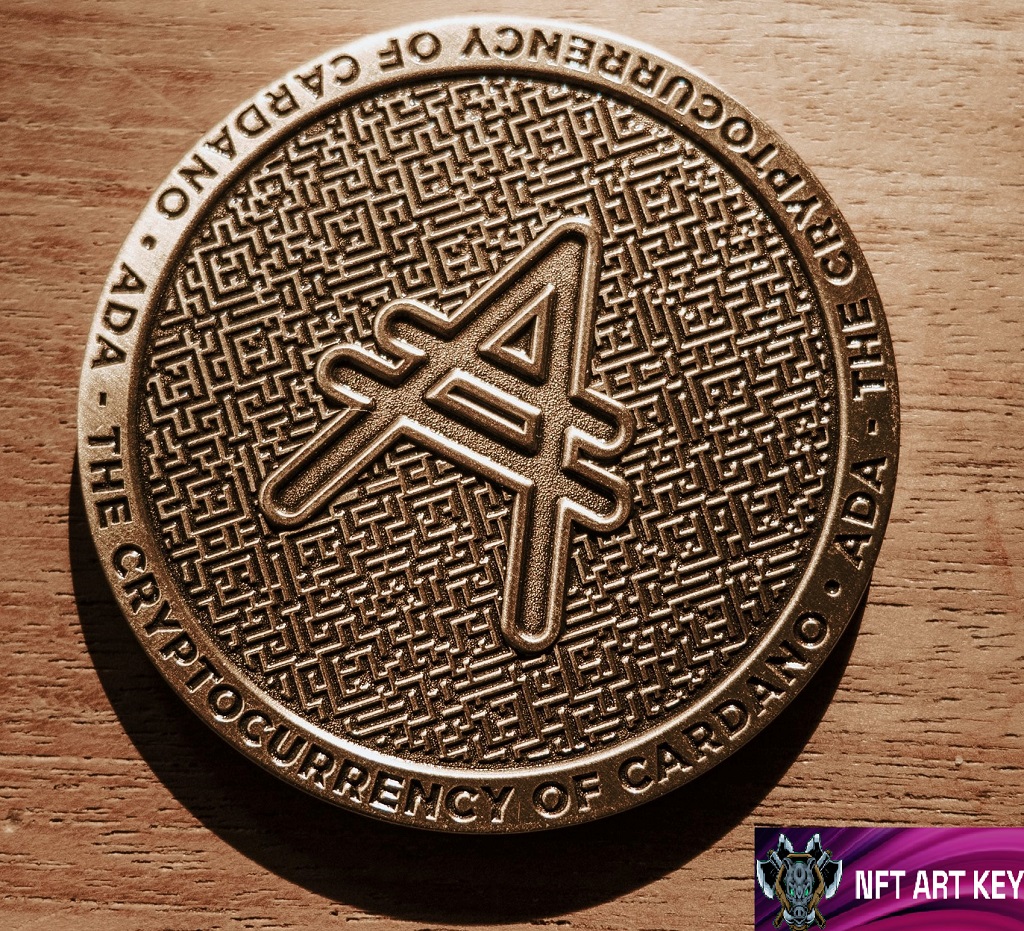INTRODUCTION
The first complete cryptocurrency as we understand it today is Bitcoin. This was proposed by Satoshi Nakamoto in 2009. Nobody could at that time imagine what would end up generating the idea of creating a peer-to-peer cryptocurrency. A currency where transactions will be stored on a blockchain auditable by anyone and without the need to trust a third party.
Any cryptocurrency that isn’t Bitcoin is referred to as an altcoin, which includes both cryptocurrencies and tokens. It is usually a simple term used to highlight that other cryptocurrencies are supported/supported in addition to bitcoin. The current number of altcoins is very difficult to know due to the number of tokens that are created each month to finance different types of projects.
The development of altcoins is relatively easy because bitcoin is open source and many of the cryptocurrencies on the market are as well. So it’s easy to get your code and make changes to fit a new idea or a slightly different take on the project. What some cryptocurrencies like Ethereum offer us is the simplicity of being able to develop tokens without the need to create a new blockchain network. Through a Smart Contract, we can create the bases of a new token, thus reducing development costs and making project financing simpler.
What Do Alternative Cryptocurrencies Or Altcoins Offer?
- Innovation
Bitcoin was the pioneer of an industry that has been evolving and presenting alternative models that provide new applications for blockchain technology and improve basic aspects of Bitcoin technology.
- Utility
Altcoins attempt to provide answers for both sectors and people. They also aim to make production processes or users’ life easier. There are initiatives working on food traceability, freight transportation, voting systems, and intelligent energy management and control, among others.
- Transparency
Eliminating data opacity in certain industries is one of the most difficult challenges, which is made possible by the blockchain, which allows anyone to audit the information contained in the blocks and verify its veracity. As the blocks are impossible to alter, it is guaranteed that the information is correct.
WHAT DO ALTCOINS CONTRIBUTE TO THE BITCOIN ECOSYSTEM?
Competition is the means by which innovation is achieved. If no one questions a product or a model, it is assumed to be the greatest or best that can be supplied, and no improvement is sought. It has achieved the pinnacle of its theoretical potential.
The fact that there are a lot of cryptocurrencies and projects simply benefits them all. We must keep in mind that many do not offer value; they are merely a replica of the code and the idea with cosmetic features added. This is where the greatest contribution of altcoins to the Bitcoin and crypto ecosystem, in general, is found.
TYPES OF ALTCOINS
When the number of altcoins began to increase, the community gave them different nomenclatures according to their usefulness. From mining-based cryptocurrencies and stablecoins to security tokens, each category of altcoins serves a purpose.
- Mining-Based Cryptocurrencies
Mining-based cryptocurrencies are altcoins generated through a mining process. Through decentralized nodes, the network solves mathematical problems to record data on the blockchain. Miners are rewarded with tokens, such as Bitcoin or any other alternative cryptocurrency that uses a proof-of-work algorithm.
- Value Tokens
These types of altcoins are associated with companies and are more similar to traditional shares, such as those issued through ICOs.
In many cases, they offer some type of dividend, either through payments or fractional share participation; the most common payment is the dividend.
- Utility Tokens
Utility tokens work slightly differently, as they enable us to receive some type of service. Furthermore, they are designed to be interchangeable for notable decentralized utilities, such as storage space.
- Stable Cryptocurrencies (Stablecoins)
Stablecoins are cryptocurrencies whose value is determined by the value of a fiat currency, such as the US dollar, thus eradicating the volatility that characterizes Bitcoin. The most prominent stable coin is Tether (USDT), whose market capitalization has grown exponentially since its launch in 2016. Unlike other altcoins, such as ETH or LINK, its value fluctuates in the order of $1.
ALTCOINS WITH THE MOST RELEVANT PROJECT TODAY
- Ethereum
Ethereum is a decentralized platform on which anybody can build and publish Smart Contracts. The so-called smart contracts are computer programs that are used to develop agreements between parties that are settled automatically when the agreed elements are fulfilled. They also serve for the development of decentralized applications (DApps) or decentralized autonomous organizers (DAO).
The platform has its own cryptocurrency, Ether, and to add more security, transactions are paid through Gas, which is also used to upload Smart contracts.
- Ripple
A private company that develops software for banks. The two most important software are xCurrent which does not make use of XRP and xRapid which makes use of XRP as a ‘source liquidity’ method. XRP is the cryptocurrency that works autonomously within the company’s infrastructure and could work autonomously if Ripple were to disappear or get rid of this digital currency
- Dash
Dash is developed as a solution for day-to-day payments. The first name it received was XCoin, discarded shortly after and changed to Darkcoin, which was also not liked by the community due to its negative connotations. It was eventually christened Dash, a contraction of Digital Cash. The main characteristics of this cryptocurrency are: it offers low commissions for transactions, quick validation of transactions and the possibility of making completely anonymous shipments.
- Cardano
Cardano is an altcoin that can be used to transfer and receive digital cash. Through the use of cryptography, digital currency enables quick and direct transfers that are guaranteed to be secure.
Cardano is creating a smart contract platform with more advanced features than any other previously developed platform. The protocol features layered blockchain software that is flexible, scalable and has been developed with academic and commercial standards as its core ideology. Cardano employs a democratic governance system that enables the project to grow over time and self-finance indefinitely.
- Tron
Tron is a decentralized blockchain-based operating system and application platform. The Tron Group’s (Tron Group) main goal is to show that the internet should be used to benefit everyone rather than as a lucrative tool for a small number of businesses. Tron gives back power to digital content providers by allowing them to sell directly to consumers rather than through an “app store.”
- Chainlink (LINK)
Chainlink is a decentralized oracle network that acts as a bridge between blockchains and off-blockchain systems, allowing smart contracts to interact with real-world data in a secure and reliable manner. Although initially built on Ethereum, Chainlink is blockchain independent and designed to work on various blockchains that have smart contract functionality.
To avoid any centralized failure, the Chainlink network does not depend on a single oracle. Instead, consisting of independent oracles that collectively retrieve data from different LINKs, the protocol’s native token is typically used to pay Chainlink network operators to ensure the accuracy of this oracle service.
- Polygon (MATIC)
It is designed to control some of the main limitations of Ethereum, such as poor performance, poor user experience (high gas fees and transaction delays), and lack of community governance. One of Polygon’s main goals is to transform Ethereum into a multi-chain ecosystem, with its interoperability protocol for the exchange of arbitrary messages with Ethereum and other blockchain networks through secure layer 2 chains and independent chains. with polygon. Polygon continues to use the same utility token (MATIC) for a wide range of purposes in the Polygon ecosystem, including paying transaction fees, contributing to network security through staking, and participating in the governance of the network.
- Dogecoin (DOGE)
Dogecoin is a peer-to-peer (P2P) cryptocurrency launched in 2013 as a lighter alternative to other cryptocurrencies. A Shiba Inu meme and a misspelt version of the English word “dog” appear in the name and logo. Dogecoin is described as a “fun and friendly internet currency” that can be used for payments and purchases, including tipping creators on social media. Dogecoin is a full-fledged cryptocurrency with its own blockchain, employing a mining system similar to Litecoin. Therefore, Dogecoin and Litecoin can be mined simultaneously without affecting operational efficiency. Unlike the vast majority of cryptocurrencies, Dogecoin is inflationary, with an unlimited supply
and 10,000 new coins mined every minute.
- Ethereum Classic (ETC)
Ethereum Classic is a blockchain-based decentralized cryptocurrency platform that executes smart contracts on schedule, without the possibility of third-party outages, censorship, or interference. It was built as a result of a contentious hard fork on the Ethereum blockchain in 2016, following which the Ethereum (ETH) mainline created a new network that transitions to a new consensus mechanism called “Proof-of-Stake.” The older network was rebranded as Ethereum Classic (ETC), which retains the pre-fork version of the Ethereum blockchain without abandoning the philosophy of blockchain immutability.
Ethereum Classic and Ethereum are similar in their basic functionalities of building smart contracts and decentralized applications (dApps). Ethereum Classic is incompatible with upgrades to the new ETH blockchain due to the nature of a hard fork.
- Solana
Solana is an open-source decentralized blockchain created for developers and institutions around the world to build decentralized applications (dApps). It employs a combination of proof of stake (PoS) and a new consensus mechanism known as proof of history to achieve high transaction speeds while maintaining security and resistance to censorship (PoH). The PoH mechanism is intended to keep the time between independent nodes in a decentralized network that does not trust each other. It acts as a cryptographic clock for the network by incorporating timestamps into each transaction and enables nodes to determine the sequence of events. Traditional blockchain systems, such as bitcoin and Ethereum, which lack a solid time source, are currently unable to expand beyond 15 transactions per second (tps) globally. On a normal gigabit network with current technology, Solana can handle roughly 50,000 tps, with a theoretical upper capacity of 710,000 tps.
SOL, the Solana network’s native token, can be used to pay for transaction fees and stakes, as well as to provide SOL holders with the chance to vote on future upgrades.
HOW DO YOU GET ALTCOINS?
Altcoins, like bitcoin, can act as a currency as well as an asset. The simplest way to get them is to buy them online. Altcoins are now traded on over 350 different exchanges. Coinbase, Binance, Kraken, and Bittrex are some of the most popular cryptocurrency exchanges. Select cryptocurrencies can also be purchased and sold using digital payment systems such as PayPal and Venmo.
The prices of Altcoins are determined by buyers and sellers who transact on exchanges, and It is important to note that cryptocurrency prices can be very volatile. To acquire them, you will need to download a digital or crypto wallet to your computer or smartphone to store your altcoins. When choosing a wallet, you should pay attention to the cryptocurrencies it supports because not all of them accept the ones that are on the market.
CAN ALTCOINS “DIE”?
Yes. In fact, there have been many altcoins after the launch of Bitcoin that failed or were born even without the intention of surviving in many cases, because they were launched as scam projects or coins to speculate on. However, an altcoin fails mostly because of its lack of utility. In other words, it’s possible that one altcoin’s use overlaps with that of a more popular altcoin: both can provide users with very similar features and services.
MOVING ON: THE FUTURE OF ALTCOINS
Some industry players argue that all cryptocurrencies were built on Bitcoin and that up to 80% of all altcoins will eventually lose their value. The long-term goal has to be to develop a strong altcoin for a very specific use case: addressing a narrowly defined purpose and need within a reasonable regulatory framework, constantly seeking mass adoption to maintain its long-term value. Altcoins can be risky, with the less established altcoins being the most dangerous. Do your research as an investor before investing in any altcoins, just as you would with any traditional security.
Photo by Ruben Hanssen
Read Next: What is Metaverse




